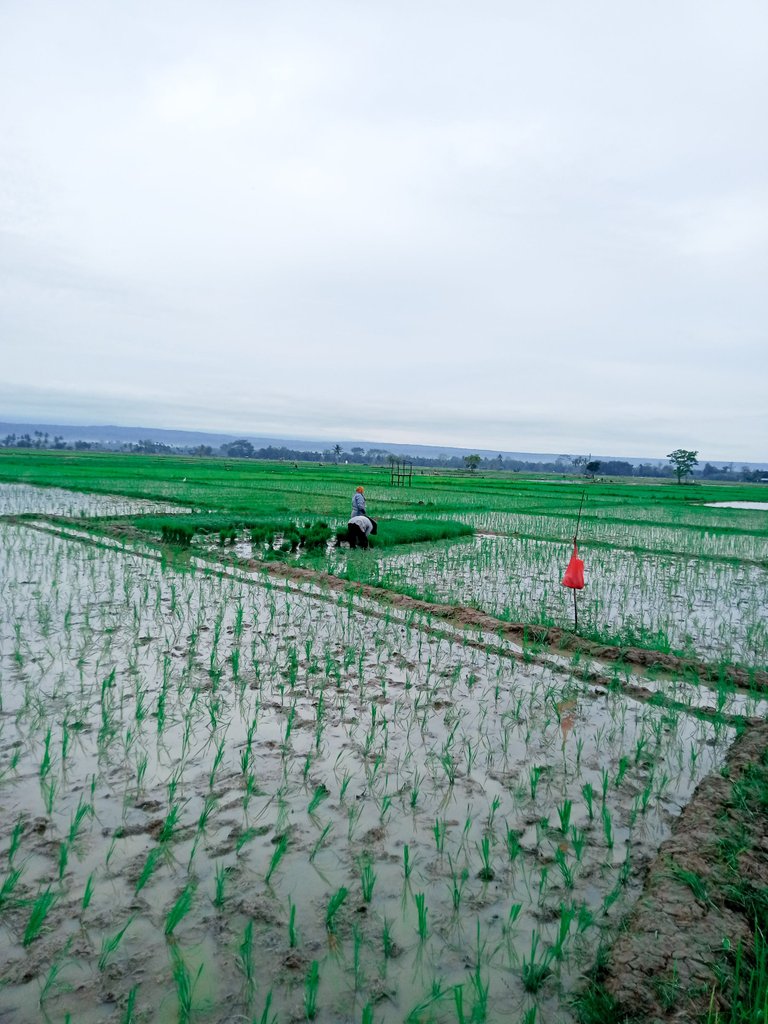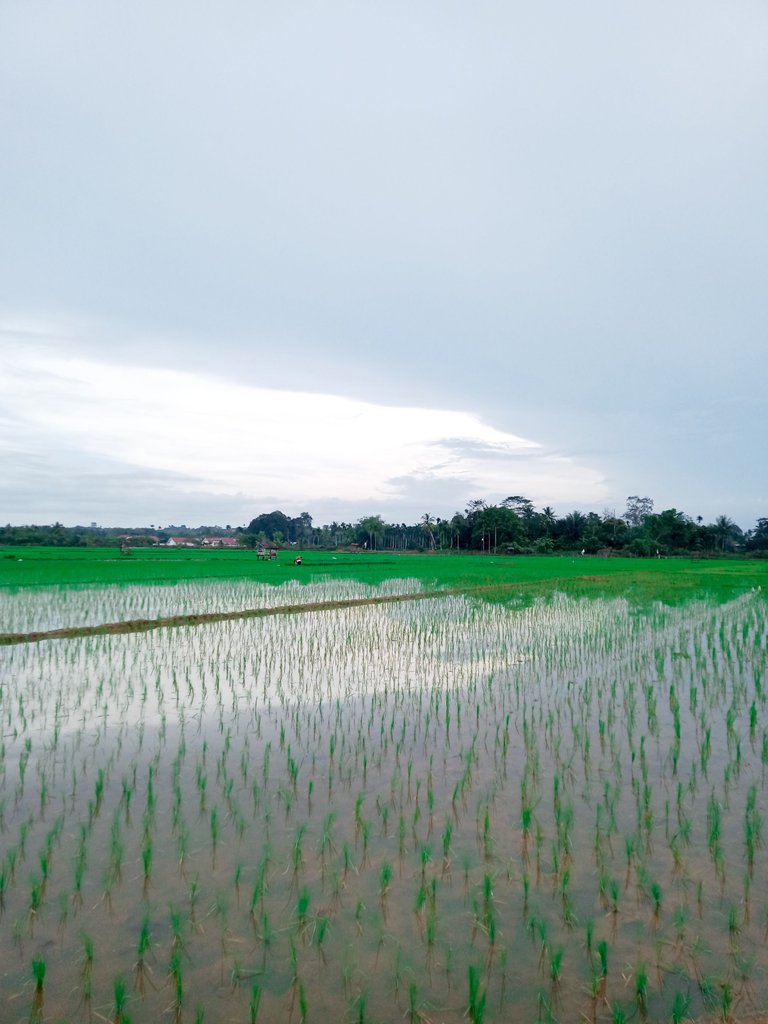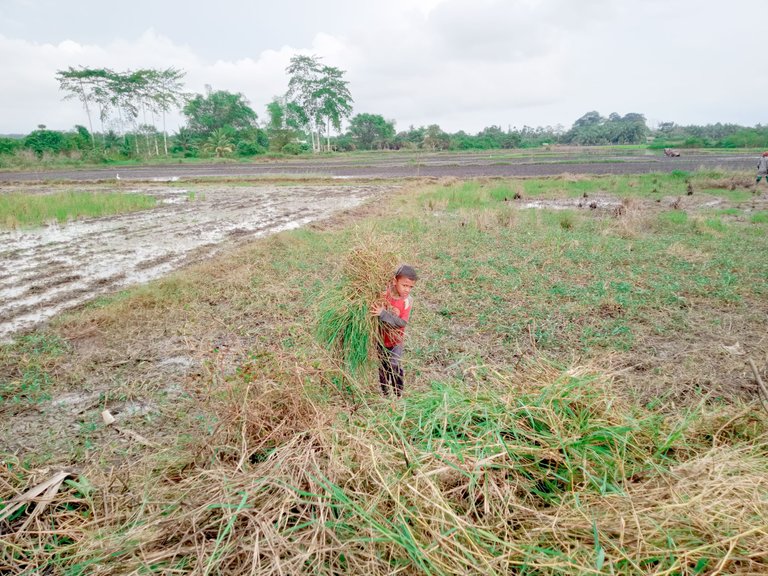After Going Through The Farmer's Child's Hard Work 4 Days Ago, A Portrait Was Recorded.....??
Hello friends, lovers of gardens and annual crops, thank you for this story about a small child who has the will to help his parents work hard during their school holidays, when the recording was taken off.
Let's call it "mursalin" I don't want to take risks with this farmer's question, and I don't dare to take selfie pictures for fear that there are things I don't understand about this blog, and it will be very difficult for me to explain why I took pictures by asking a few things when That?
The process of clearing and clearing the paddy fields has also led to the planting process and it's time to wait for the healing of the rice in the paddy fields!!!

Portraits were recorded of two women who were still with rice seeds and were also in the process of collecting and asking a few questions, why did you pull out too many seeds, answered the mother farmer, these are seeds ordered because there will be a rice nursery again if some the place eaten by slugs,,,,and this is to be able to be inserted between the leaves, and today is also recovery day and the day when everyone starts giving and is busy to start sprinkling some of the fertilizers that rice needs, including some fertilizers to grow stems and leaves in order to have rice, among others, you can follow some of the things I'm doing right now.

To understand fertilization for rice plants, we must know the age of the rice plants first. Currently, many rice varieties released by the government are early maturing. For example, Inpari 10 is 108-116 days old and Inpari 13 is 103 days old. But for ciherang and IR 64 rice it is generally 115 -125 days old.
Just by looking at these 2 conditions, it will be difficult for us to determine when the fertilization time is right for both.
Basic Fertilizer
When the seedlings are transplanted, the seedlings need about 8-12 hst or an average of 10 hst to strengthen the roots. At this time, the first fertilization should be done. Because at that time the leaves and roots of rice plants had begun to develop. thus will absorb the maximum nutrients. Do not give it at 0-5 days after planting, because the leaves and roots of the rice plants have not yet developed and are still under stress. In this condition the roots are not ready to receive fertilizer. If we give it will be in vain, what else if we give high amounts of urea fertilizer. Because urea fertilizer is easy to evaporate and is hygroscopic. At the time of administration, it is better when the water conditions are messy.
This period is the transition from the vegetative to the generative phase. Under these conditions the plant is in need of high nutrition. This is indicated by the release of flag leaves or pregnant rice. This means that the rice panicles will come out soon. At that age is the right time for stage 3 fertilization to be given. Thus, rice plants will produce optimal panicles. So if we want to fertilize rice plants, look at the 3 conditions mentioned above. That's when the condition of the rice plants will maximally absorb the nutrients we provide and the results can be satisfactory. Fertilization for rice plants is adjusted to weather/climate conditions, soil structure, time, place, variety and other factors

After the age of 30 days give KCL again as much as 50% To understand fertilization for rice plants, we must know the age of the rice plants first. Currently, many rice varieties released by the government are early maturing. For example, Inpari 10 is 108-116 days old and Inpari 13 is 103 days old. But for ciherang and IR 64 rice it is generally 115 -125 days old. Rice Growing Phase Just by looking at these 2 conditions, it will be difficult for us to determine when the fertilization time is right for both. To determine when rice plants are fertilized, it can be seen from the growth phases of rice plants. example of ciherang rice aged 115 – 125 days.
This period is the transition from the vegetative to the generative phase. Under these conditions the plant is in need of high nutrition. This is indicated by the release of flag leaves or pregnant rice. This means that the rice panicles will come out soon. At that age is the right time for stage 3 fertilization to be given. Thus, rice plants will produce optimal panicles. So if we want to fertilize rice plants, look at the 3 conditions mentioned above. That's when the condition of the rice plants will maximally absorb the nutrients we provide and the results can be satisfactory. Fertilization for rice plants is adjusted to weather/climate conditions, soil structure, time, place, variety and other factors.
Furthermore, the time for applying fertilizer is also very varied and needs the right calculation because it can be different from one to another.


Thanks for still being with me with the follow up process, and I'll be back in the next few days where I'll be writing about what I'm doing in these fields, thanks for being on hivegardent's beloved blog.
| Photography | story Gardent |
|---|---|
| Location | indonesia aceh |
| Iso | otimatic |
| Camera | Oppo A12 smartphone |
| Editing collor | lihgroom |
| Writing | @lingkar-photo |
How important, I didn't know all about the rice process and its variety. Also what nice pictures 😊. Thanks for sharing your post in this nice community.
Thank you @rigel-gladys
Gracias por compartir este conocimiento con todos👍
Thank you so much @ferguis-ve
Good job kid. ☺️👏
I am inspired by the hard work of this boy.
I wish him a success someday.
all village children will become stronger and smarter in doing many things in my village. @missleray
Wow, that's good to know. ☺️